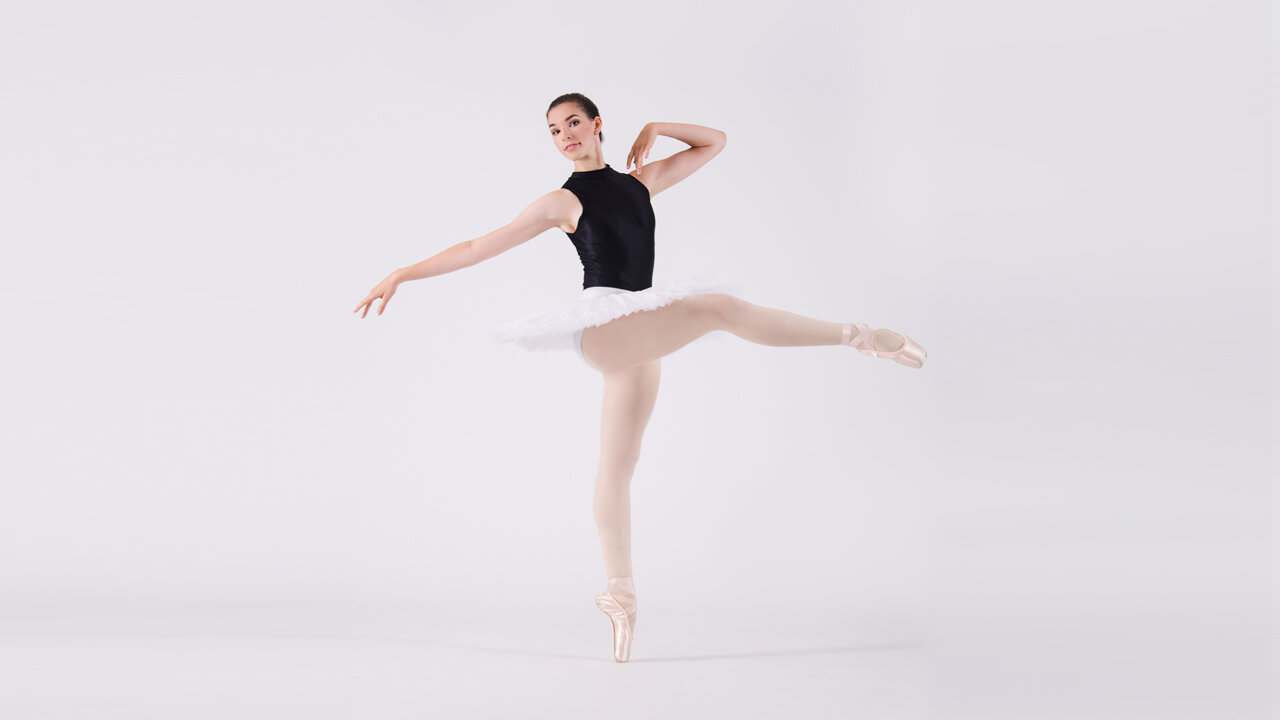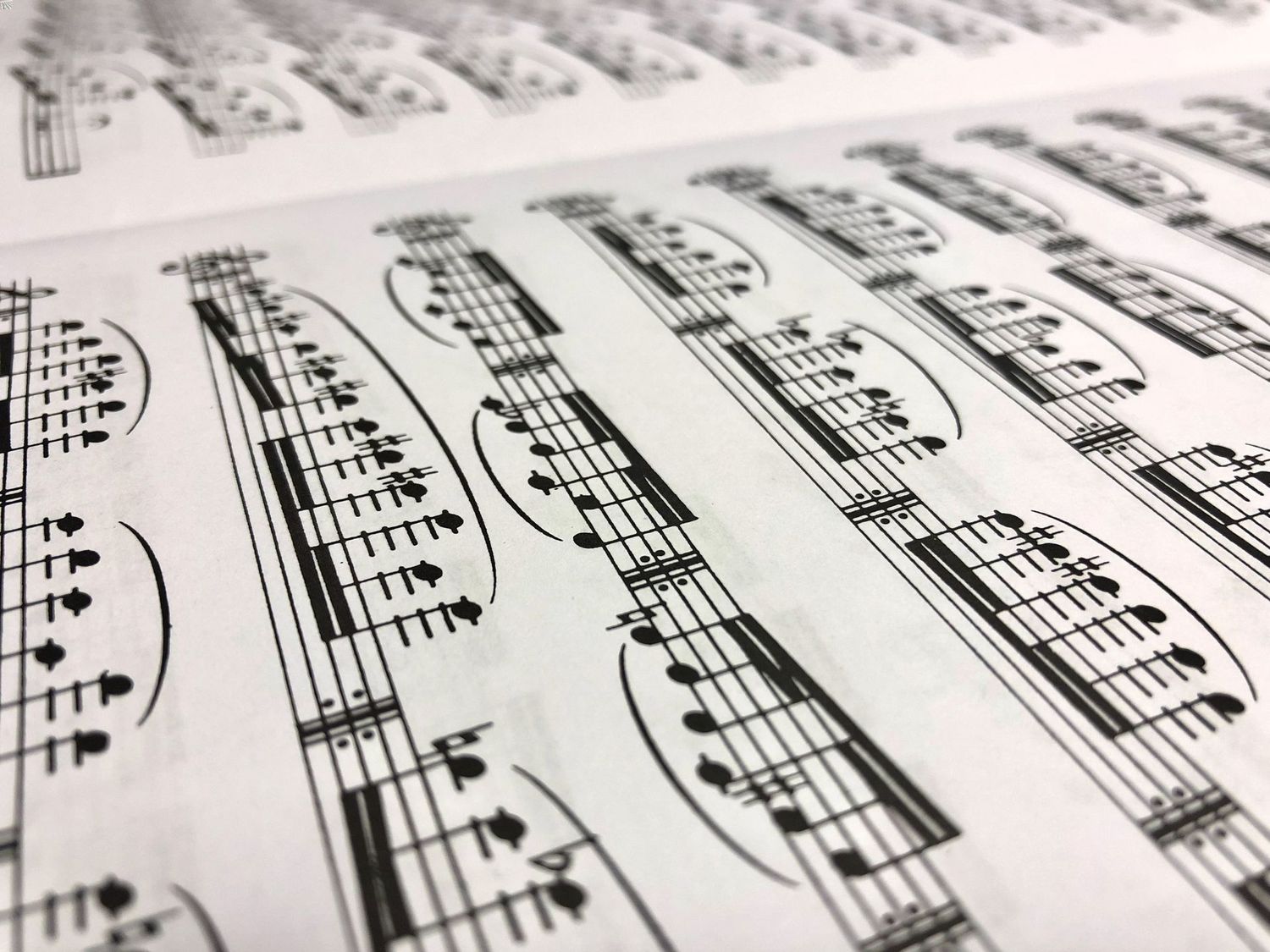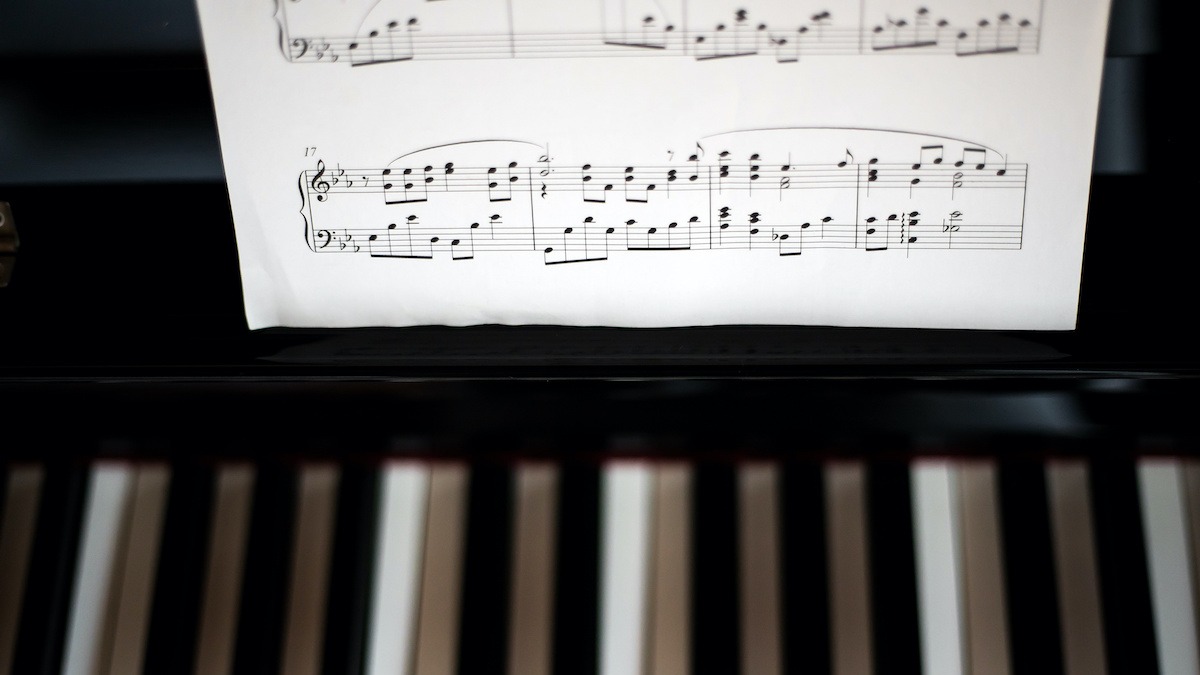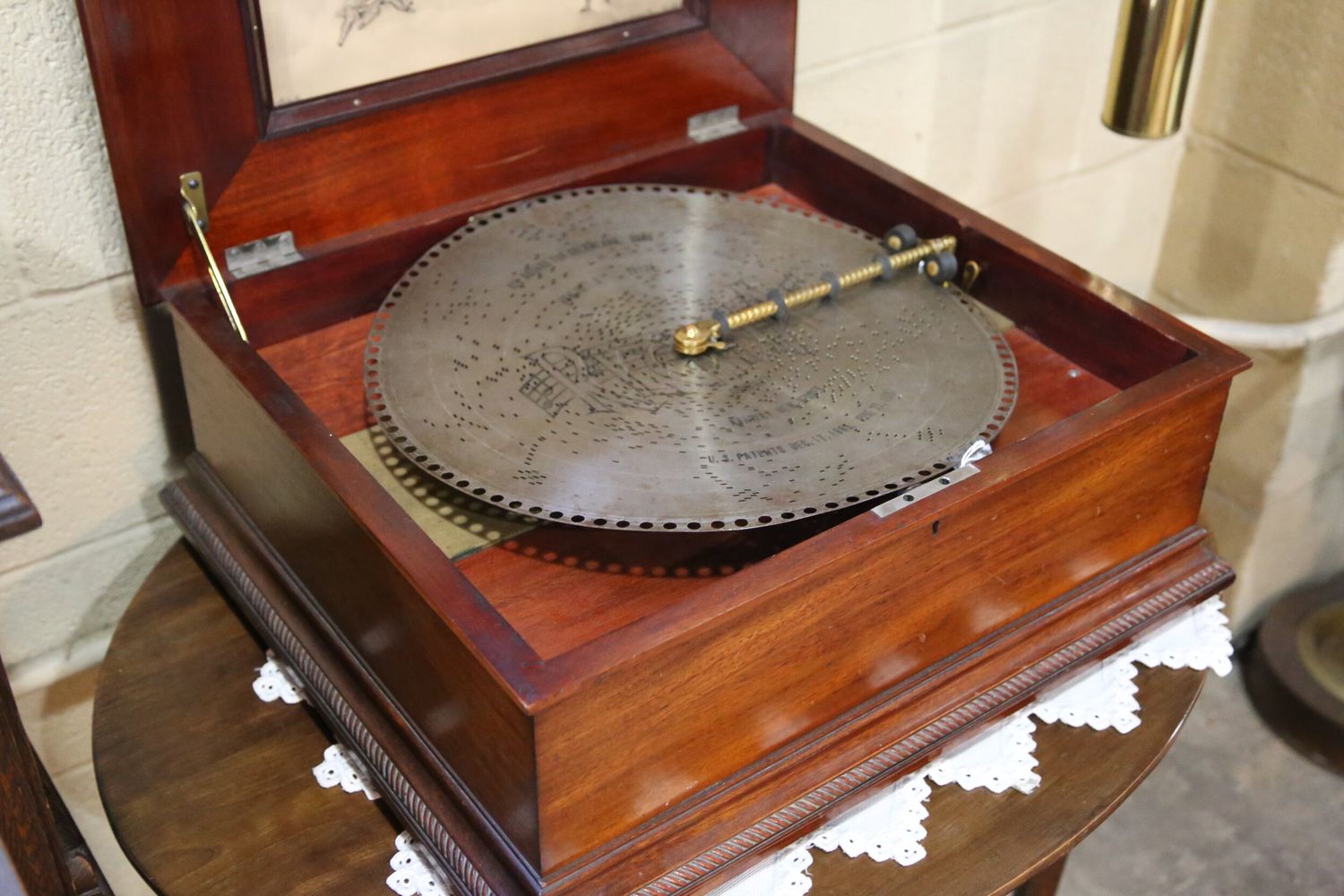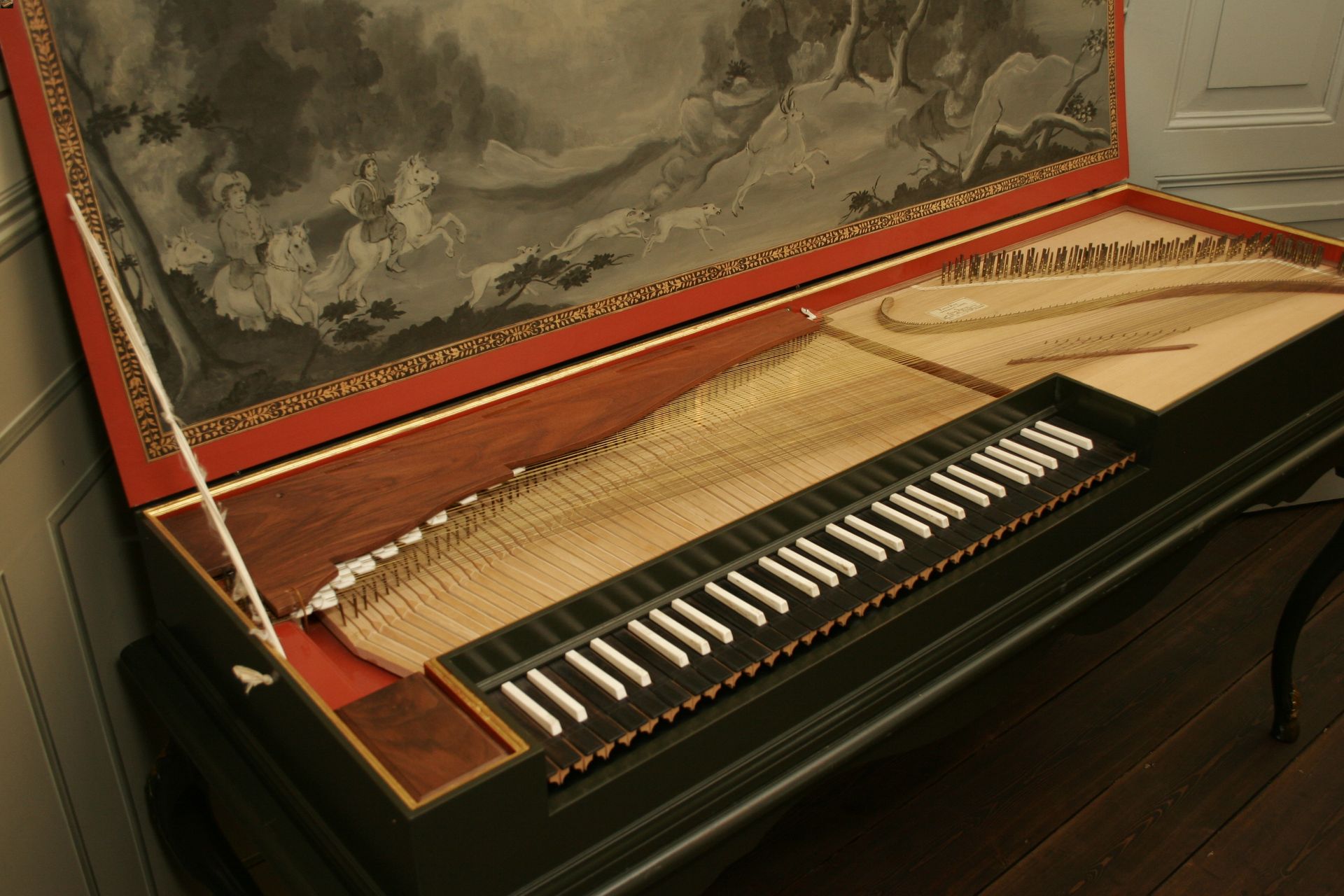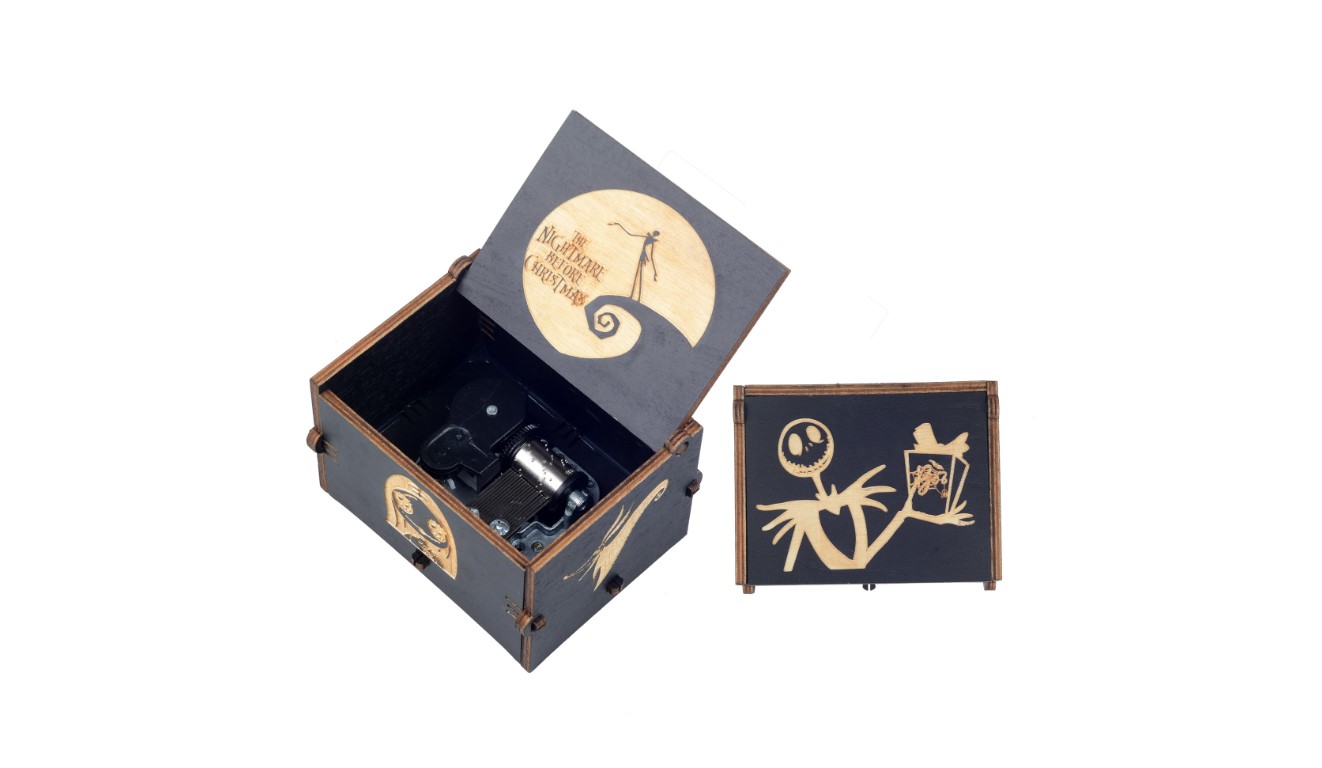Home>Events & Info>Ballet>What Is The Music To A Ballet Called
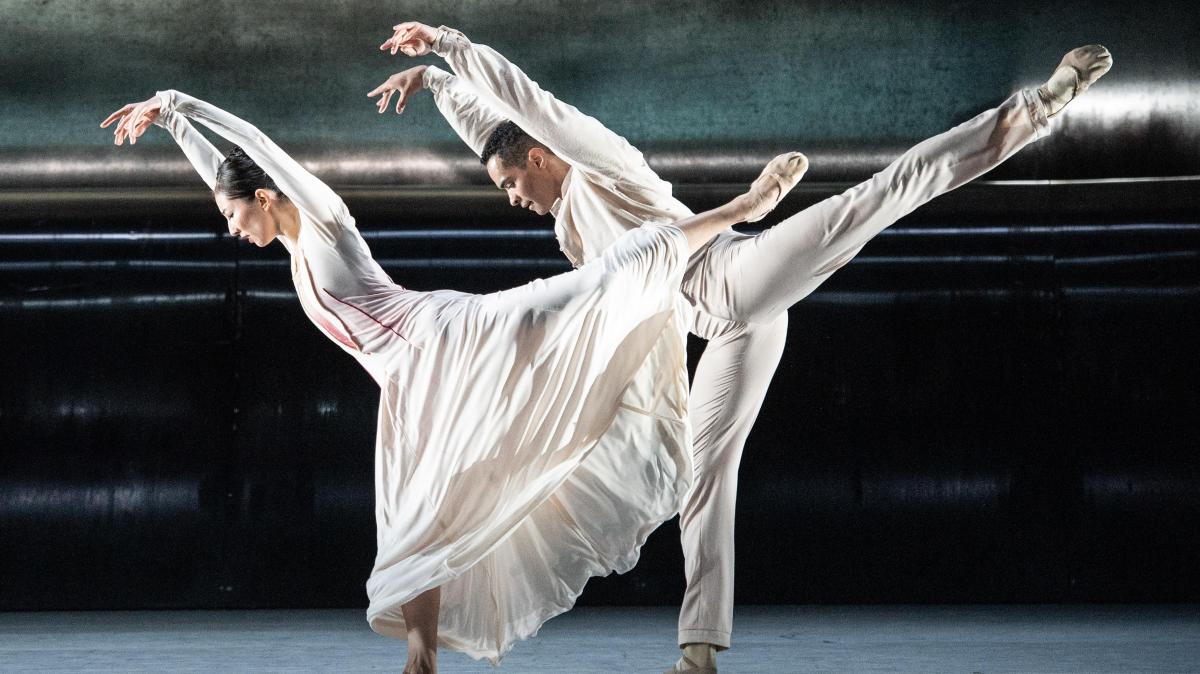

Ballet
What Is The Music To A Ballet Called
Modified: January 22, 2024
Discover the enchanting melodies and rhythms that bring a ballet to life. Explore the captivating world of ballet music and its role in creating mesmerizing performances.
(Many of the links in this article redirect to a specific reviewed product. Your purchase of these products through affiliate links helps to generate commission for AudioLover.com, at no extra cost. Learn more)
Table of Contents
Introduction
Ballet, often referred to as the “dancing art,” is a beautiful and intricate form of expression that captivates audiences around the world. While the dancers gracefully move across the stage, their movements are seamlessly accompanied by the enchanting melodies of ballet music. But have you ever wondered what role the music plays in a ballet production? What is the music to a ballet called?
Ballet music serves as the soul of a ballet performance, acting as a powerful storyteller that conveys emotions, heightens the atmosphere, and enhances the dancers’ movements. It sets the mood, guides the tempo, and transports both performers and spectators into a world of elegance and enchantment.
Throughout the history of ballet, music has played a crucial role in shaping the art form. Whether it’s the classical compositions of Tchaikovsky or the modern creations of contemporary composers, the music has the ability to transcend language and communicate directly with the audience’s emotions.
Each ballet production comes with its own unique music, composed specifically to complement the narrative and choreography. This musical composition, known as a ballet score, is carefully crafted to evoke the desired emotions, create a sense of harmony, and enhance the visual storytelling.
While ballet is often associated with classical music, it is important to note that modern ballet productions experiment with various styles and genres, incorporating elements of jazz, contemporary, and even rock music into their scores. This allows for a broader range of expression and diversifies the art form.
Join us as we delve into the world of ballet music, exploring its history, elements, and the significant role it plays in shaping the artistic experience. Discover the intriguing relationship between ballet and music, and gain a deeper appreciation for the harmonious union of these two arts.
Background of Ballet Music
The origins of ballet music date back to the Renaissance era in the late 15th century, where the combination of dance and music began to gain popularity in the royal courts of Italy and France. Initially, ballet was performed as entertainment for the nobility, often depicting mythological stories and historical events.
As ballet evolved into a more structured art form, composers started creating specific music that would accompany the dancers’ movements. Jean-Baptiste Lully, the renowned French composer and dancer, is often credited as the pioneer of ballet music. His compositions for court ballets in the 17th century marked the beginning of a long-standing tradition of creating original music for ballet productions.
During the 19th century, ballet music experienced a significant transformation with the emergence of Romantic ballet. Composers like Pyotr Ilyich Tchaikovsky became known for their enchanting compositions that brought fairy tales to life through music. Tchaikovsky’s iconic works such as “Swan Lake,” “The Nutcracker,” and “Sleeping Beauty” remain staples of the ballet repertoire to this day.
The 20th century witnessed further innovation in ballet music. Composers began experimenting with new styles and techniques, breaking away from the traditional limitations. Igor Stravinsky revolutionized the genre with his groundbreaking score for “The Rite of Spring,” which introduced complex rhythms and dissonant harmonies, challenging traditional ballet conventions.
Today, the ballet music landscape continues to evolve, with contemporary composers pushing boundaries and exploring new ways to express emotions through sound. They draw inspiration from a diverse range of musical genres, blending classical elements with modern twists to create captivating scores that resonate with audiences.
With its rich history and continuous evolution, ballet music has become a vital component of ballet productions. It not only enhances the beauty and grace of the dance but also serves as a catalyst for storytelling, engaging the audience on an emotional level. The intricate melodies, harmonies, and rhythms woven into ballet music elevate the performance, creating a magical experience that transports spectators into the world of artistry and imagination.
Role of Music in Ballet Productions
Music plays a crucial role in ballet productions, serving as a guide and a source of inspiration for dancers, choreographers, and audiences alike. It not only provides a rhythmic framework for the movements but also enhances the storytelling and evokes emotions. Let’s explore the various dimensions and roles that music assumes in the world of ballet.
First and foremost, ballet music sets the mood and creates an atmosphere for the performance. Whether it’s a light and playful piece or a dramatic and intense composition, the music establishes the emotional tone from the moment the curtain rises. It sets the stage for the story that is about to unfold, immersing both dancers and viewers in a captivating experience.
Furthermore, ballet music serves as the foundation for the choreography. The dancers rely on the music’s rhythm and tempo to time their movements, ensuring that their steps and gestures are perfectly synchronized. The melodies and harmonies guide the dancers, allowing them to express their artistry and tell the story through their movements.
Music also has the power to evoke strong emotions in both performers and audiences. Whether it’s a tender love duet or a triumphant finale, the melodies and harmonies can elicit a wide range of feelings, creating a deeply immersive experience. The music acts as an emotional conduit, enhancing the dancers’ performances and resonating with the hearts of the spectators.
In addition to its emotional impact, ballet music also contributes to the narrative structure of the production. Just like a film score, the music in ballet is carefully crafted to support and enhance the storyline. It provides cues, transitions, and leitmotifs that help the audience follow the plot and understand the character’s motivations and emotions.
Moreover, the music in ballet can also be seen as an integral part of the visual aesthetics. The synergy between the music and the choreography creates a seamless blend of auditory and visual artistry. The ebbs and flows of the music are mirrored by the graceful movements of the dancers, creating a harmonious and captivating spectacle.
Ultimately, the role of music in ballet productions is to create a complete sensory experience. It transports the audience into a world of beauty and imagination, where the combination of dance and music weaves a compelling story. From the first notes to the final crescendo, ballet music breathes life into the performance, leaving a lasting impression on all who experience it.
The Elements of Ballet Music
Ballet music is a complex and intricate art form that combines various elements to create a symphony of sound specifically tailored for dance. Let’s explore the essential components that make up ballet music:
Melody: The melody is the primary voice of the music and is often carried by instruments such as violins, flutes, or pianos. It is the main theme that captures the audience’s attention and conveys the emotions and narrative of the ballet. Melodies in ballet music can range from gentle and lyrical to dramatic and powerful, depending on the scene and mood.
Harmony: Harmony refers to the combination of different musical notes played simultaneously to create a sense of depth and richness in the music. Harmonies in ballet music help to establish the mood and add complexity to the melodies. They can be consonant, creating a sense of stability, or dissonant, creating tension and suspense.
Rhythm: Rhythm is the heartbeat of ballet music. It provides the underlying structure and timing for the dancers’ movements. The rhythmic patterns in ballet music dictate the pace, energy, and syncopation of the choreography. From the graceful waltz to the lively allegro, rhythm infuses life and motion into the performance.
Tempo: Tempo refers to the speed at which music is performed. In ballet, the tempo can vary greatly, depending on the mood and style of the dance. For example, a slow and melodic adagio expresses grace and tenderness, while a fast and lively allegro signifies energy and excitement. The tempo of the music guides the dancers’ movements and helps maintain synchronization.
Dynamics: Dynamics in ballet music refer to the variation in volume, intensity, and expression. It allows for contrasts and adds depth to the emotional range of the performance. A soft, pianissimo section can create a sense of intimacy, while a bold, fortissimo section can express power and grandeur. Dynamics in ballet music contribute to the overall dramatic impact of the production.
Orchestration: Orchestration refers to the use and arrangement of different instruments in ballet music. Composers carefully select instruments to create specific sounds and textures that enhance the mood and atmosphere of the ballet. From the delicate tones of the strings to the majestic brass instruments, orchestration plays a vital role in creating a captivating sonic landscape.
By carefully weaving these elements together, composers create a musical tapestry that not only supports the dance but also adds depth, drama, and emotional resonance to the ballet. The combination of melody, harmony, rhythm, tempo, dynamics, and orchestration creates an enchanting auditory experience that enriches the visual storytelling of ballet.
Importance of Tempo and Rhythm in Ballet Music
In the world of ballet, tempo and rhythm play a vital role in shaping the movements, energy, and overall dynamics of the dance. They are essential elements that contribute to the synchronization and expression of the dancers. Let’s explore the significance of tempo and rhythm in ballet music:
Guiding the Choreography: Tempo and rhythm act as the guiding force for the choreography in ballet. They serve as a framework, allowing dancers to synchronize their movements with the music. The tempo sets the speed and pace of the dance, while the rhythmic patterns provide the structure and timing for the individual steps and gestures. This synchronization is crucial for creating a cohesive and visually appealing performance.
Enhancing the Energy and Dynamics: The tempo and rhythm of the music greatly influence the energy and dynamics of the ballet. A fast and lively tempo, such as in an allegro section, generates an energetic and vibrant atmosphere, allowing the dancers to showcase their athleticism and agility. On the other hand, a slow and gentle tempo, like in an adagio, creates a sense of grace and elegance, allowing for more expressive and sustained movements. The interplay between different tempos and rhythmic patterns adds depth and variety to the performance, capturing the audience’s attention and keeping them engaged.
Expressing Emotions: Tempo and rhythm are powerful tools for expressing emotions in ballet. The choice of tempo can convey the mood and atmosphere of a scene, whether it’s a passionate pas de deux or a joyful ensemble. A rapid tempo can evoke excitement and exhilaration, while a slow tempo can evoke tenderness or melancholy. Rhythmic variations, such as syncopation or accents, can add tension or playfulness to the music, augmenting the emotional impact of the dance. Together, tempo and rhythm work hand in hand to heighten the emotional connection between dancers and audience members.
Captivating Audience Attention: Tempo and rhythm in ballet music help capture and maintain the audience’s attention. Changes in tempo can create moments of anticipation, surprise, or intensity, keeping viewers on the edge of their seats. Similarly, rhythmic variations and patterns can create patterns of tension and release, adding excitement and making the performance more captivating. The precise coordination between the music’s tempo and the dancers’ movements adds a layer of complexity and precision to the ballet, enhancing its overall artistry.
Tempo and rhythm are integral components that shape the choreography, energy, emotions, and engagement in ballet. They work together to create a cohesive and visually stunning performance. Composers and choreographers carefully select and craft the tempo and rhythmic patterns to align with the narrative and enhance the dancers’ artistry. The precise understanding and execution of tempo and rhythm elevate the ballet to new heights and enable audiences to experience the full power and beauty of this extraordinary art form.
The Relationship between Ballet and Music
The relationship between ballet and music is a harmonious union that spans centuries and transcends boundaries. Dating back to the Renaissance era, ballet and music have been intricately intertwined, collaborating to create captivating performances that inspire and move audiences. Let’s explore the unique and profound connection between ballet and music:
Enhancing the Artistic Experience: Ballet and music are two art forms that, when combined, create a powerful and immersive experience. The movements of the dancers are elevated by the accompanying melodies, harmonies, and rhythms that breathe life into their performances. The emotional and expressive qualities of the music complement and enhance the storytelling, enabling the dancers to convey emotions and narratives more effectively. The marriage of ballet and music creates a multi-sensory experience that captivates the audience and transports them to a world of beauty and emotion.
Mutual Influence and Collaboration: Ballet and music have a cyclical relationship, with each art form influencing and inspiring the other. Composers draw inspiration from the graceful movements of ballet, composing melodies that are tailored to the specific choreography. On the other hand, choreographers craft their dances in response to the music, utilizing the rhythmic patterns and structures as a guide. This mutual influence results in a seamless integration of movement and sound, where the dancers and musicians work collaboratively to bring the vision of the performance to life.
Capturing the Essence of Storytelling: Both ballet and music excel in storytelling, evoking emotions and conveying narratives through their respective forms. Ballet uses the power of body language and movement to tell stories visually, while music communicates with the soul through melody and harmony. When combined, ballet and music have the remarkable ability to capture the essence of a story, enhancing and deepening its impact. The emotions and ideas conveyed through the music are amplified by the artistry of the dancers, creating a profound and immersive narrative experience.
Creating a Language Beyond Words: Ballet and music possess a universal language that transcends cultural and linguistic barriers. They have the ability to communicate complex emotions and ideas without the need for words. No matter where one comes from or what language they speak, the power of ballet and music can be understood and appreciated on a deeply human level. The expressive movements of ballet are brought to life and given voice through the melodies and harmonies, connecting with audiences in a profound and universal way.
The relationship between ballet and music is one of mutual inspiration, collaboration, and artistic synergy. Together, they create a sensory experience that combines movement, sound, and emotion, captivating audiences and stirring the depths of the human spirit. Whether it is the timeless classical ballets or the innovative contemporary creations, the relationship between ballet and music continues to evolve, giving birth to new and exciting artistic expressions.
Famous Ballet Composers and their Music
Over the years, numerous composers have made indelible contributions to the world of ballet, creating iconic music that has become synonymous with the art form. Their compositions have not only shaped the history of ballet but also continue to inspire and enchant audiences worldwide. Let’s discover some of the most celebrated ballet composers and the timeless music they have gifted us:
Piotr Ilyich Tchaikovsky: Tchaikovsky is perhaps one of the most renowned composers in the ballet world. His enchanting scores for “Swan Lake,” “The Nutcracker,” and “Sleeping Beauty” have become staple repertoires of ballet companies around the globe. The sweeping melodies, intricate orchestrations, and emotionally resonant themes in Tchaikovsky’s music beautifully capture the magic, romance, and drama of classic ballet.
Igor Stravinsky: Stravinsky’s revolutionary collaboration with choreographer Vaslav Nijinsky on “The Rite of Spring” caused quite a stir when it premiered in 1913. The dissonant harmonies, complex rhythms, and powerful orchestration challenged traditional ballet conventions and pushed the boundaries of what ballet music could be. Stravinsky’s other notable ballet compositions include “The Firebird” and “Petrushka,” showcasing his mastery of blending modernist elements with Russian folk influences.
Sergei Prokofiev: Prokofiev’s contributions to ballet include two beloved classics, “Romeo and Juliet” and “Cinderella.” The vibrant, expressive melodies and evocative storytelling in these works have made them enduring favorites in the ballet repertoire. Prokofiev’s music combines romantic lyricism with a distinct modern sensibility, capturing the emotional depth and timeless appeal of these iconic love stories.
Frederic Chopin: Though primarily known for his piano works, Chopin’s compositions have also found their way into the ballet world. His delicate and poetic music is often used for lyrical and expressive solo dances. Ballets such as “Les Sylphides” and “Chopiniana” feature his elegant and melancholic pieces, evoking a dreamlike atmosphere that perfectly complements the ethereal movements of the dancers.
Leonard Bernstein: Bernstein’s ballet score for “West Side Story” has become a classic in the genre. The fusion of jazz, Latin, and classical influences in his music adds a contemporary and dynamic flair to the choreography. The iconic songs, such as “Maria” and “Tonight,” infused with Bernstein’s signature energy and emotional depth, have made “West Side Story” a beloved ballet with its unforgettable music.
Philip Glass: Glass, a prominent figure in contemporary classical music, has composed several ballet scores that reflect his minimalist style. His collaboration with choreographer Jerome Robbins on “Glass Pieces” is a mesmerizing exploration of repetitive patterns and hypnotic rhythms. Glass’s music creates a pulsating and mesmerizing soundscape that perfectly complements the dancers’ movements.
These are just a few of the many composers who have left an indelible mark on the world of ballet. Their music has become an integral part of the ballet repertoire, continuing to inspire and captivate audiences with its beauty, emotion, and artistic synergy. The timeless compositions of these renowned ballet composers ensure that their legacies live on, enriching the art form and thrilling generations of ballet enthusiasts.
Contemporary Trends in Ballet Music
Ballet, as an art form, is constantly evolving and embracing new creative expressions. This includes the music that accompanies ballet performances. In recent years, there have been several exciting trends and developments in contemporary ballet music that showcase the innovative spirit of the genre. Let’s explore some of these trends:
Exploration of New Genres: Contemporary ballet music has seen a blending of genres, embracing a diverse range of musical styles beyond the traditional classical realm. Composers are integrating elements of jazz, rock, electronic, and even world music into their scores. This infusion of different genres adds a fresh and dynamic flavor to ballet, pushing boundaries and attracting new audiences with its eclectic soundscapes.
Collaborations with Modern Composers: Many ballet companies are collaborating with modern composers who are renowned in the contemporary music scene. These partnerships result in innovative and groundbreaking ballet scores that marry the worlds of classical ballet and contemporary composition. It brings a distinct and modern edge to the art form, fusing traditional ballet techniques with cutting-edge musical sensibilities.
Exploration of Technology: With advancements in technology, ballet music has expanded beyond the traditional orchestral setups. Composers are now using electronic elements, digital sampling, and computer-generated sounds to augment and enhance their compositions. The integration of technology allows for a wider range of sonic possibilities, creating immersive soundscapes that further intensify the emotional impact of the performance.
Cross-disciplinary Collaborations: Ballet music is embracing collaborations with artists from other disciplines, such as visual arts, multimedia, and contemporary dance. These collaborations result in multi-faceted productions that combine music, movement, and visual elements to create a unique and immersive artistic experience. The fusion of various art forms creates a synergistic impact, expanding the creative boundaries of ballet music.
Experimentation with Structures and Forms: Contemporary ballet music is breaking away from traditional structures and forms, embracing more experimental and unconventional approaches. Composers are exploring fragmented narratives, abstract compositions, and non-linear storytelling. This departure from conventional norms allows for greater artistic freedom and experimentation, breathing new life into the art form and challenging audiences’ perceptions.
Incorporation of Live Music: While recorded music has traditionally been used in ballet performances, many companies are returning to the use of live music. Live musicians bring a dynamic and spontaneous energy to the performance, creating a symbiotic relationship between the dancers and the musicians. The presence of live music adds an element of immediacy and authenticity, enhancing the overall artistic experience for both the dancers and the audience.
Contemporary trends in ballet music demonstrate the evolving nature of the art form, embracing new styles, technologies, and collaborations. These trends push the boundaries of what ballet music can be, enriching the artistic experience and engaging audiences in exciting and unexpected ways. As ballet continues to evolve and adapt to the contemporary landscape, the music that accompanies it will undoubtedly continue to evolve and captivate audiences with its innovative spirit.
Conclusion
Ballet music is not merely an accompaniment to the movements of dancers; it is the soul that breathes life into the art form. From its origins in the Renaissance courts to the present day, ballet music has played a pivotal role in shaping the world of dance. It sets the mood, guides the choreography, and evokes emotions, creating a profound and captivating experience for audiences.
The relationship between ballet and music is a harmonious marriage, with each art form enhancing and inspiring the other. Whether it’s the classical compositions of Tchaikovsky, the experimental sounds of Stravinsky, or the diverse contemporary trends, ballet music has the power to transport us to new realms of beauty, emotion, and storytelling.
Tempo and rhythm dictate the energy and dynamics of the choreography, while melody and harmony capture the essence of the story. Each element of ballet music works together to create a symphony of sound that complements the dancers’ movements and captivates the hearts of spectators.
The world of ballet music continues to evolve, embracing new genres, collaborations, and technologies. Composers push the boundaries of tradition, experimenting with structures, forms, and cross-disciplinary collaborations. These contemporary trends breathe fresh life into the art form, attracting new audiences and challenging our perceptions of what ballet music can be.
As we revel in the beauty and artistry of ballet, let us not forget the profound impact that music has on this enchanting world. Ballet music creates a language beyond words, transcending cultural and linguistic barriers to connect with audiences on a universal level. It has the power to transport us, inspire us, and move us deeply, leaving an indelible impression long after the final notes fade away.
So, the next time you watch a ballet performance, take a moment to appreciate the intricate relationship between the graceful movements of the dancers and the captivating melodies of the music. Marvel at the seamless synergy between these two art forms, and let yourself be carried away by the transformative power of ballet music.

